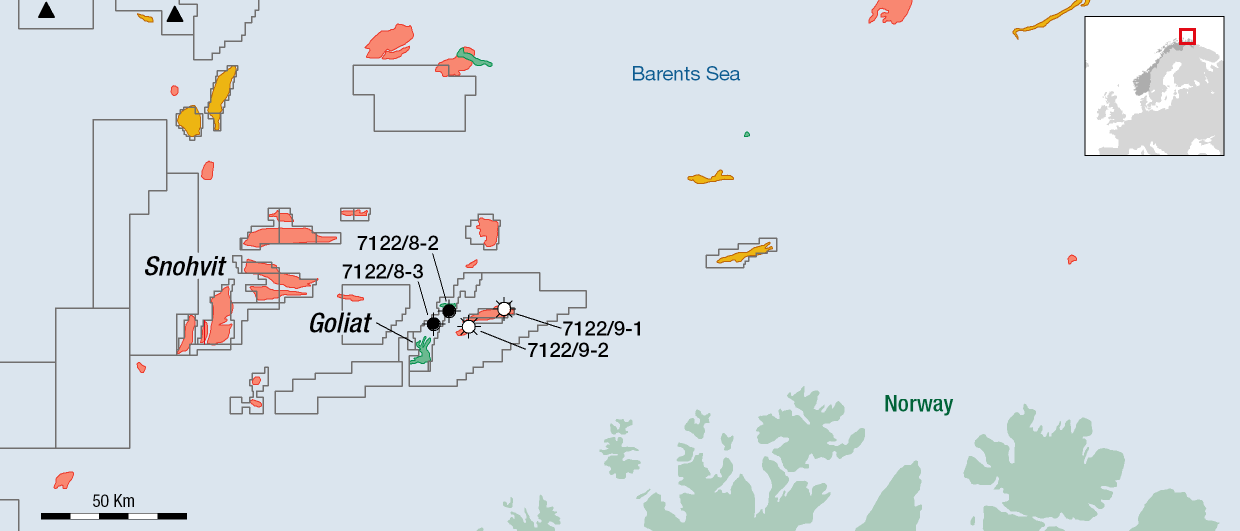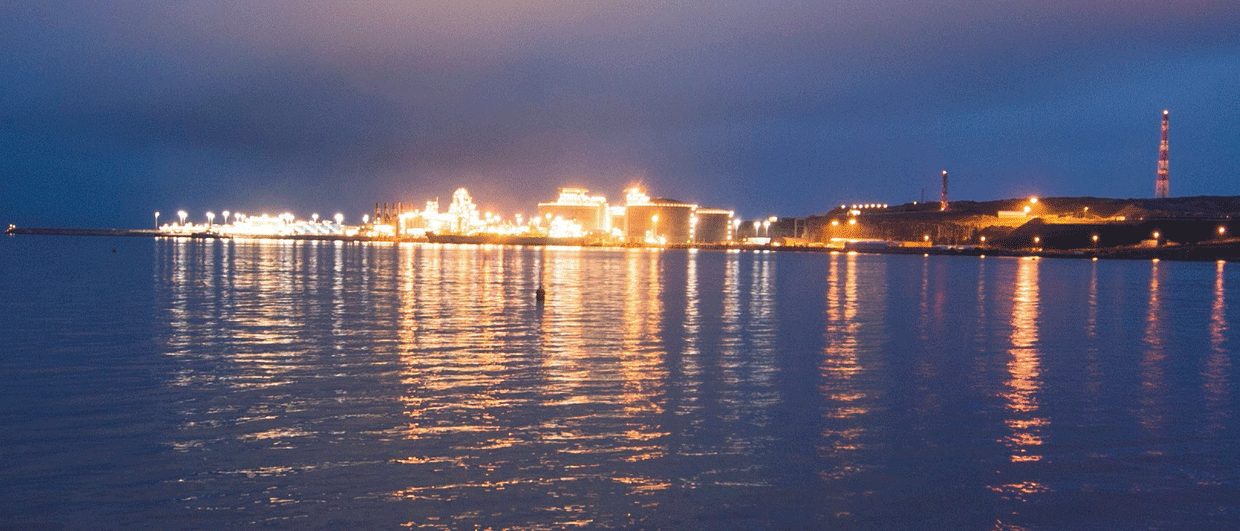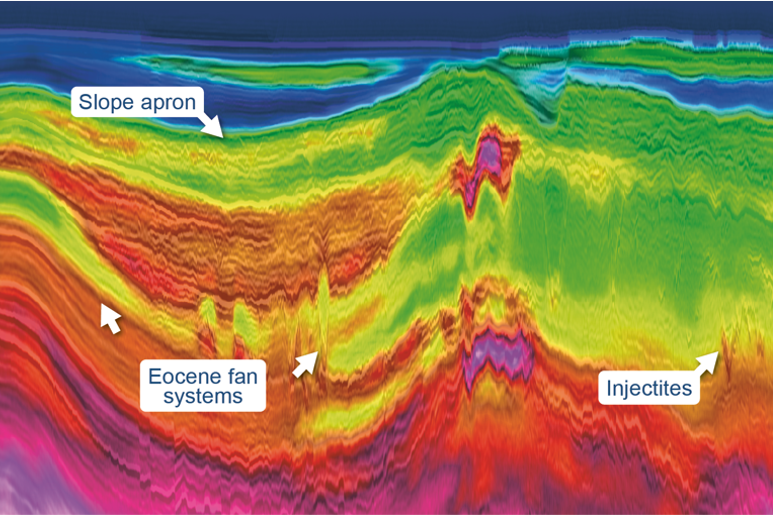Rock physics is the link between the seismic response and geological properties. It explains how rock properties like clay content, porosity, and fluid-fill influence physical properties such as rigidity and compressibility. These can be used to predict how seismic waves behave as they travel through the subsurface.
The interactive rock physics well browser rockAVO, is a product that models and predicts responses in seismic data. It conveys the synthetic Amplitude-versus-Offset (AVO) response of the well data and correlates it to the AVO response of the measured seismic. Demonstrating correlation between synthetic and measured AVO ensures the reliability of resultant seismic mapping, reservoir modelling and quantitative interpretation. By interactively modifying the rock, fluid and seismic properties in real-time, rockAVO provides the means to explore and understand realistic geological scenarios in the observed seismic AVO responses.
PGS GeoStreamer acquisition along with cutting edge imaging technology provide seismic data of unrivalled quality. Regionally consistent well data conditioning, petrophysical analysis, and rock physics modelling delivered by rockAVO and integrated with seismic data provide essential tools for derisking prospectivity and enhancing reservoir understandings.
This article focuses on how rockAVO and PGS GeoStreamer seismic data can be used together to bring greater insight into well 7121/9-1 in the Barents Sea, by comparing and contrasting seismic and well responses from well 7120/12-2 located in the same area.
Using rockAVO to Derisk Exploration in the Barents Sea
PGS offers a total of 144 wells in rockAVO within the Barents Sea including 18 recently released wells added to the atlas in 2020. Every publicly available exploration well with relevant data is available in rockAVO to complement the significant volume of high-quality seismic data also available in the region.
The GeoStreamer PURE ultra-high density 3D broadband seismic survey delivers the highest quality image of the subsurface across the Hammerfest Basin in the Barents Sea, and is currently being extended north-west. Wells 7120/12-2 and 7121/9-1 are two of several wells located within this seismic survey (Figure 1).
The primary objective of Well 7120/12-2 was to test Middle to Early Jurassic sandstones in the central compartment of the Alke structure. Hydrocarbon-bearing sandstones were encountered in the Middle to Late Jurassic (Stø Formation) and in the Middle to Late Triassic (Snadd Formation).
Well 7121/9-1 was drilled on the Zapffe prospect in the southern part of the Hammerfest Basin, around 19 km west of the Goliat Field. The objective was to prove petroleum in Late Jurassic and Early Cretaceous reservoir rocks. Considerably thinner reservoirs with poorer reservoir quality than expected were encountered in the top Knurr Formation. All reservoirs were completely brine saturated and the well was classified as dry.

Figure 1 highlights an obvious strong amplitude event in the gradient close to Well 7120/12-2 at the top of the gas bearing Stø Formation. A comparable event is also circled on Figure 1 at a similar level close to Well 7121/9-1, but this is associated with a water-bearing response as confirmed by the well results. Why similar gradient responses are caused by differing fluid fill can be assessed by rockAVO. Figure 2 shows the rockAVO window for Well 7120/12-2 whereas Figure 3 shows the same window but for Well 7121/9-1.
At both well locations, excellent correlation is observed between the in-situ synthetic seismic calculated using the rockAVO well data and the measured GeoStreamer seismic data. This confirms that the rock physics model and associated synthetic seismic can be integrated with the GeoStreamer seismic in rockAVO to understand what is driving the observed responses.
For the gas bearing 7120/12-2 well, rockAVO indicates that the synthetic in-situ gather shows a decrease in amplitude with offset corresponding to a negative gradient. This is confirmed by the Amplitude-versus-Angle (AVA) plot and intercept versus gradient crossplot. As highlighted by the blue arrows on Figure 2, the AVA plot indicates that a water-bearing response at the top of the reservoir would create an event with no change in amplitude across all angles, and therefore a gradient close to 0. However, the yellow arrows on Figure 2 indicate that the modeled gas-bearing response shows a stronger intercept and gradient and therefore a more pronounced variation of amplitude with offset. This demonstrates the validity of the data as the in-situ synthetic and measured seismic response show the highest correlation to the gas-filled modeled scenario.


Conversely, rockAVO indicates that there is less variation of amplitude with offset at the same interface in Well 7121/9-1. This translates into a weaker event in a calculated gradient attribute and is consistent with the observed response calculated from the preconditioned Hammerfest Basin GeoStreamer seismic data, as highlighted by the green arrow on Figure 3. The modeled AVA response for the synthetic fluid scenarios (wet, oil, gas and Gas-Oil Contact) in rockAVO show that there will be far less of a difference between the AVA responses of events with different fluid fill compared with Well 7120/12-2. The blue arrow on Figure 3 indicates that the same AVA response will be seen for any fluid content suggesting it is much more difficult to discriminate between hydrocarbon and water-bearing sands in this location.
Summary
The correlation between data sets and agreement to known well responses confirms the fidelity, quality, and reliability of both the Hammerfest Basin GeoStreamer seismic and the rockAVO well data. Rock physics models provided in rockAVO can be reliably and interactively perturbed to better understand features of interest in seismic. Figure 1 shows some potentially interesting features within the calculated gradient section, particularly in the PL1074 license area, that may be consistent with the gas response observed in Well 7120/12-2. The interactivity of rockAVO and ability to perturb the calibrated rock physics models in real-time can be used to understand how these responses relate to rock and fluid properties and enhance the understanding of potential prospectivity in this and other areas.
JAMES MOORE and ROBERTO RUIZ – PGS





